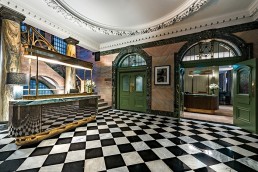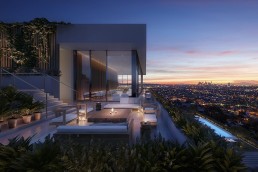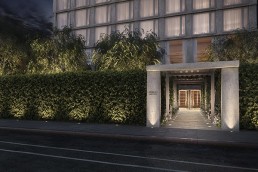Staircases often occupy the most prominent positions in hospitality spaces, moving beyond their functional purpose to become the architectural centrepiece of a project. And there’s plenty for architects to consider when designing these structures – they need to be practical and safe while at once being stylish and in keeping with their surroundings, whether that be through modern, traditional or innovative aesthetics.
Here’s our pick of the most impressive staircase designs from the world of hospitality:
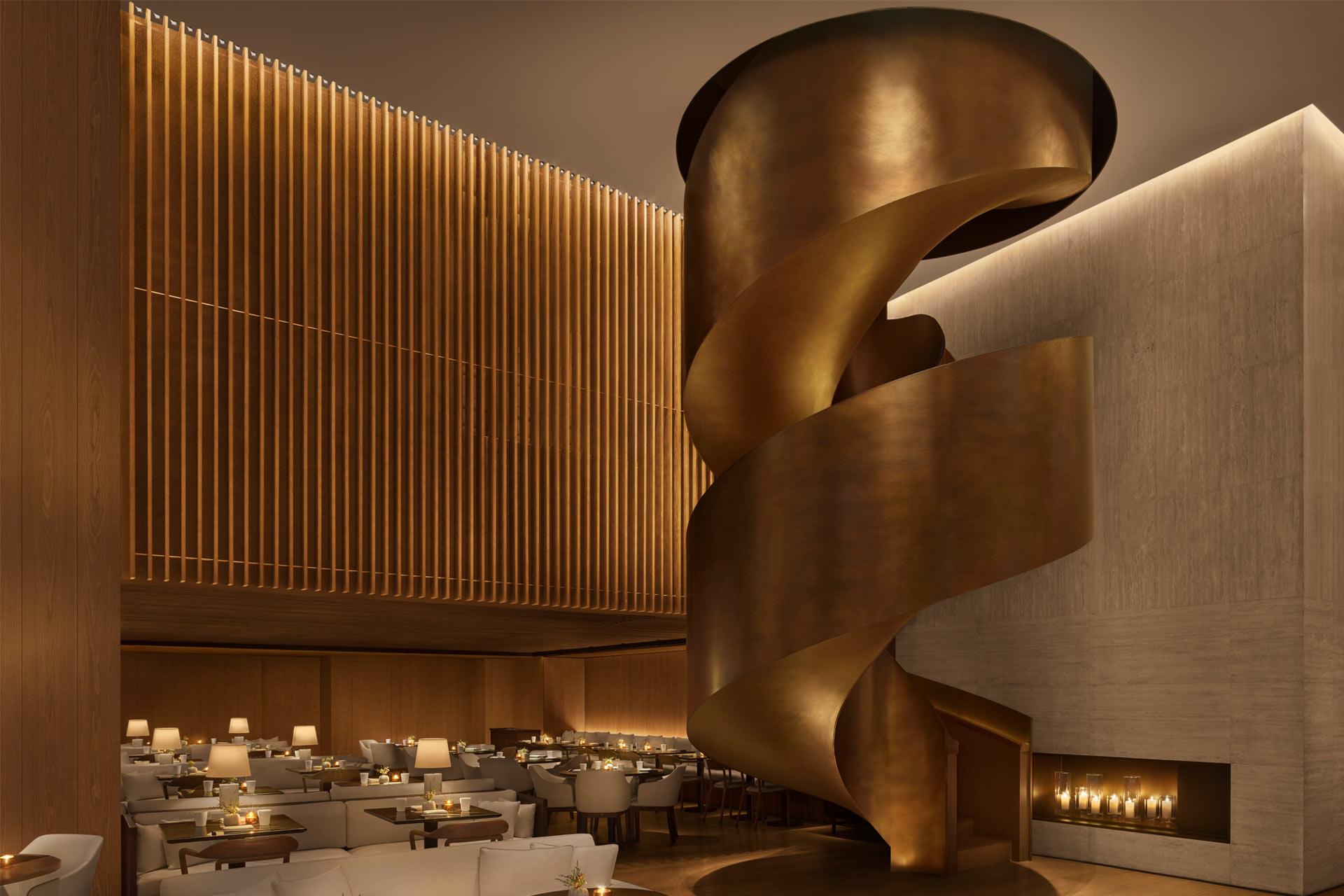
The Shanghai Edition, China
Designed by Neri & Hu for The Shanghai Edition, this striking centrepiece winds continuously down three floors from the hotel’s rooftop garden, providing access to a triple-layered eating and drinking area. The elegant, aged bronze spiral staircase leads first up to the 35-seater Punch Room bar and then out onto the top-floor terrace, where guests can sip on a signature Edition cocktail while taking in panoramic views of the historic Bund waterfront set against Pudong’s futuristic skyline.
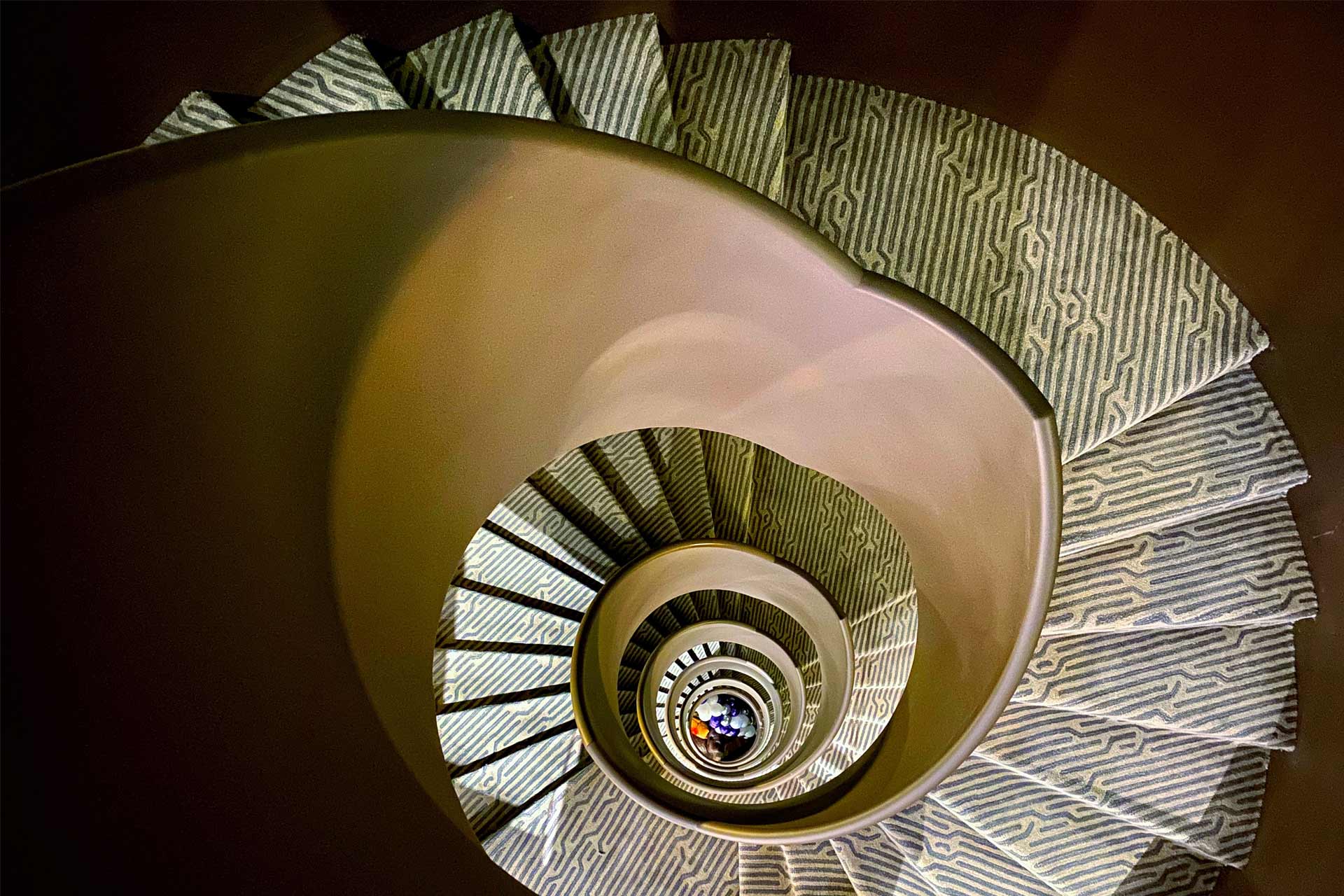
Stock Exchange Hotel, Manchester
Swirling up from the hotel’s basement private dining room, The Vault, to fully-serviced apartment The House on the fifth floor, this specially commissioned spiral staircase complements the Stock Exchange’s rich history, echoing the grandeur of the Edwardian Baroque structure. Once guests have reached the top they’ll find the largest penthouse of its kind in the city, complete with three bedrooms, a fitness space and a roof terrace affording panoramic views across the Cottonopolis.
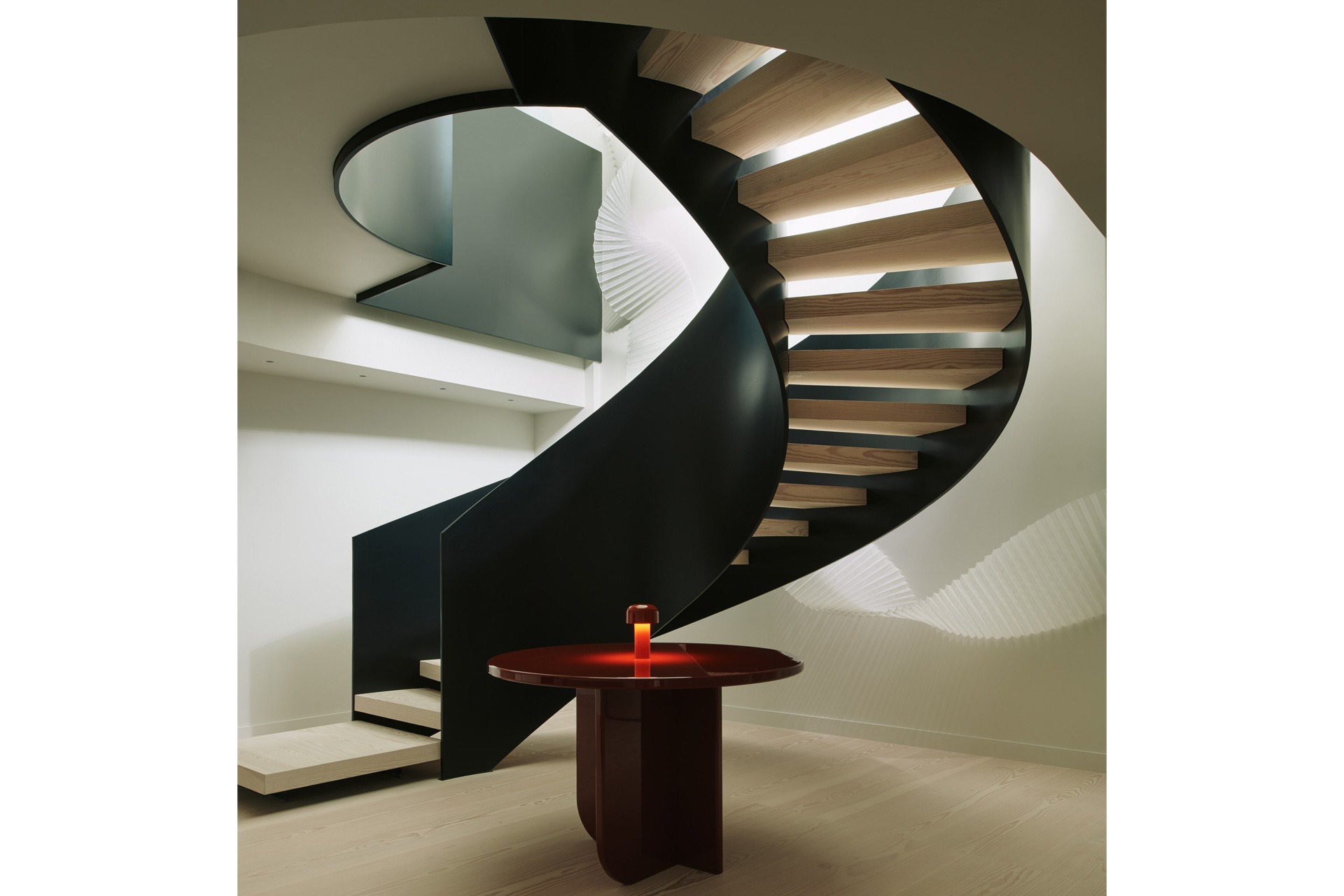
Television Centre, London
When British design studio Waldo Works unveiled bold and contemporary interiors for the largest penthouse apartment at London’s Television Centre – the reimagining of the former home of the BBC in the heart of White City – the firm focalised its entrance hall with an imposing steel spiral staircase, which sees a commissioned paper sculpture by Deepa Panchamia rising through its core, announcing itself in waves.
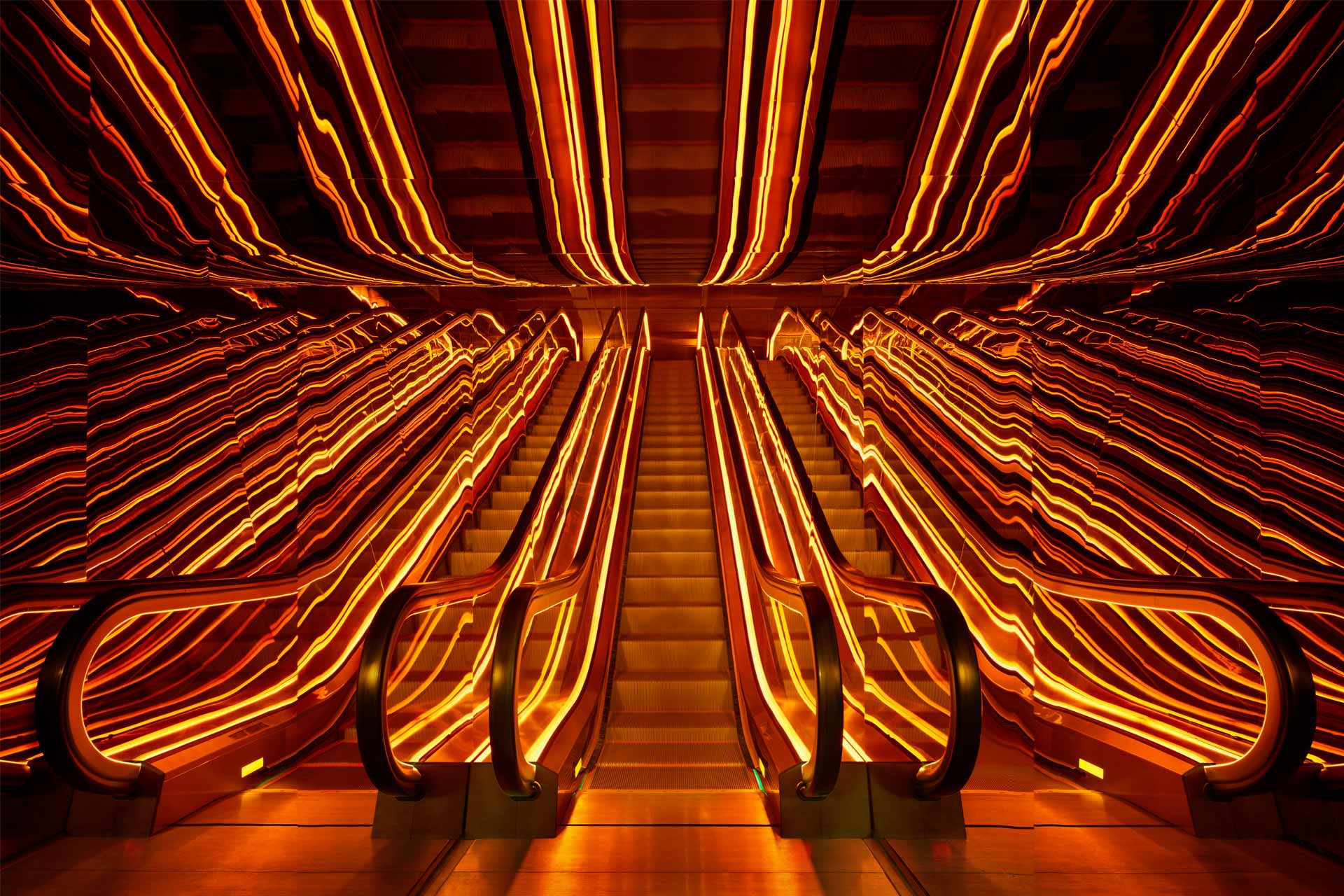
Public, New York
Ian Schrager’s Public in Manhattan features a showstopping escalator designed by Swiss architecture firm Herzog & de Meuron. Past the ground floor’s revolving doors, the escalators are encased in metal tubes that lead towards the second-floor lobby, and were created with a hot-rolled steel exterior contrasted by an interior made from reflective, custom copper-coloured stainless steel imported from Japan. Through the use of incandescent LED lights, the escalator also gives off a unique infinity lighting effect, while mirrored surfaces reflect and repeat the golden-orange lights piped along handrails – a firm Instagram favourite.
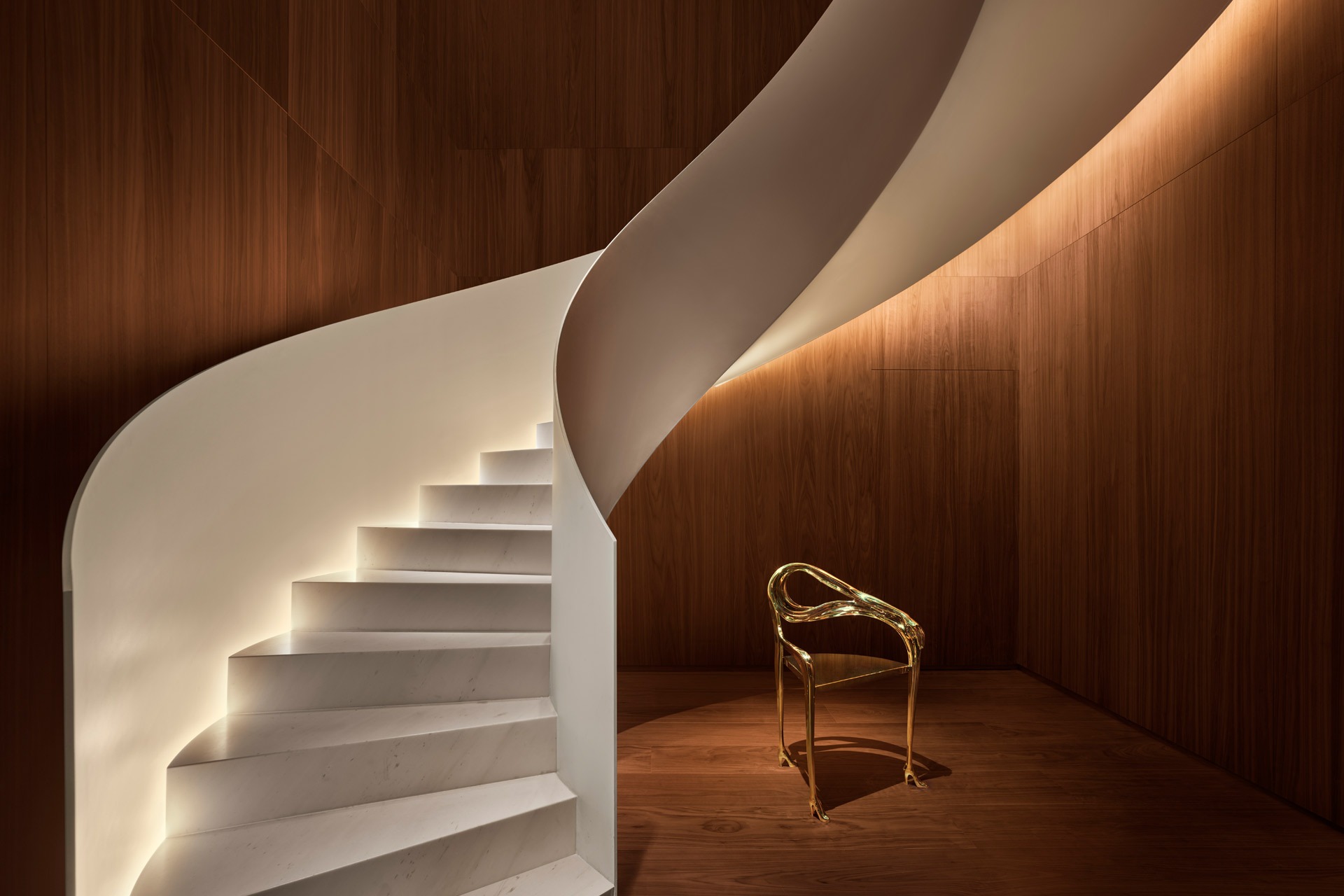
The Barcelona Edition, Spain
Located on the edge of El Born District beside the Barcelona Cathedral, The Barcelona Edition (another of Ian Schrager’s acclaimed projects) boasts a dramatic white spiral staircase designed by Carlos Ferrarter Studio and Lázaro Rosa-Violán. True to the former Studio 54 and current Edition boss’ signature style, the staircase ascends from basement restaurant Cabaret all the way up to the city’s go-to bar, Punch Room, changing it’s light from red to white as it goes.
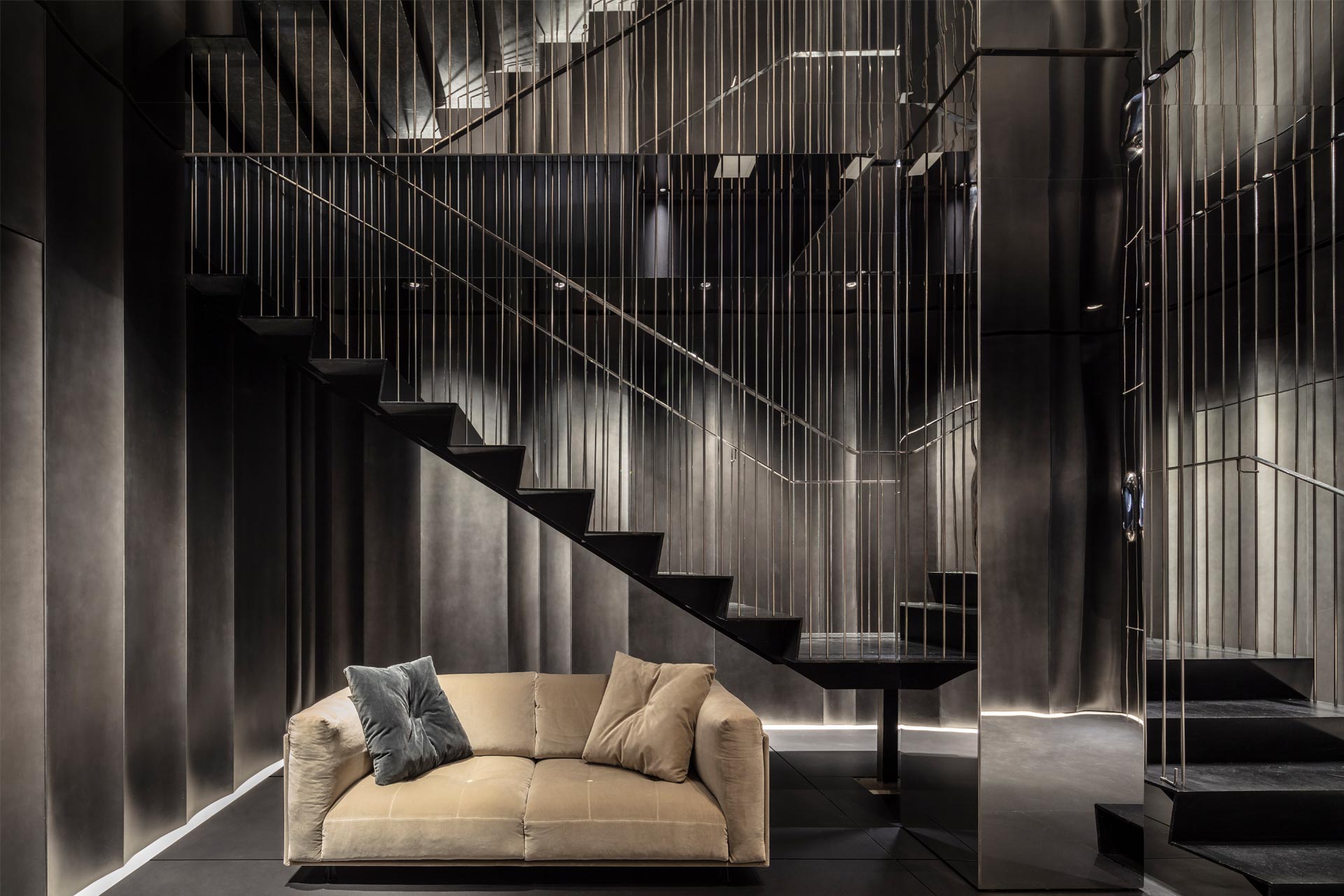
Âme, New York
On entering luxury jewellery brand Âme’s New York showroom – designed by Dutch architects Baranowitz + Kronenberg (B+K), the Lower Manhattan space takes inspiration from the shadows of the undulating cast iron facades typical of the district – a floating staircase combining past, present and future blends into the bold and abstract backdrop of the store. Enticing customers down to the VIP level, the staircase highlights the dark and peripheral envelope of the interiors and monochromatic palette throughout.
CREDITS
Words: Ben Thomas
Related Posts
14 January 2020
Feature: Stock Exchange Hotel, Manchester
11 January 2019
West Hollywood Edition announces spring opening date
11 May 2017
